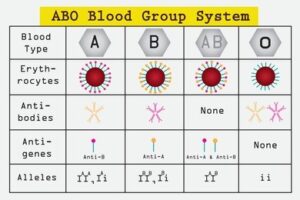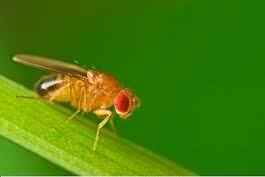MULTIPLE ALLELES- FEATURES & EXAMPLE
Introduction
Alleles are the variants of a gene that exists in two or more forms. Each gene is inherited in two alleles, i.e.,one from each parent. It is therefore, two different alleles are responsible for a trait.
Heterozygous– Individuals having different alleles of a gene (Aa).
Homozygous– Individuals carrying two identical alleles (AA or aa).
Multiple Alleles and Multiple Allelism
When a trait is controlled by more than two alleles for a gene, it is called multiple alleles, and the phenomenon is called multiple allelism. Such multiple alleles are responsible for producing different types of phenotypes and genotypes. This phenomenon can be observed during population studies. Thus, multiple alleles are important in promoting variation within the same species.
When many alleles exist for the same gene, the most common phenotype or genotype in the natural population is denoted as the wild type (or ‘+‘‘+‘), and all other phenotypes or genotypes are considered as variants or mutants derived from the wild type.
In Mendelian inheritance, a given chromosomal locus was occupied by two distinct types of gene alternatives i.e. one dominant and one recessive. These alternatives are two alleles of the same gene.
But in any population, if instances of there are more than two alternatives (alleles) exists called as “multiple allelism” where different forms of the same gene exist within the population. Such three or more variants for the same gene are called multiple alleles.
Key Features
- Here same gene can have more than two alleles which are situated on homologous chromosomes at the same locus.
- Multiple alleles express various alternatives of one trait.
- Different alleles can exhibit codominance, dominance-recessive behaviour or incomplete dominance.
- This phenomenon can be observed during population studies. Thus, multiple alleles are important in promoting variation within the same species.
- Mutations may lead to the production of variant forms of alleles, leading to multiple allelism phenomenons.
- Multiple Alleles combine in different ways in a population which produce different kinds of phenotypes. These phenotypes are resultant of proteins encoded for various alleles. Even though each gene produces its effect for the same character, the presence of different allelic forms leads to variation in the structure and functions of these proteins, which leads to different phenotypes or traits.
Example
- ABO blood group system in humans.
In humans, the blood groups are controlled by a single gene (I for ‘isohaemagglutinin‘) which represents the production of glycoprotein or antigen present on the surface of the RBCs. It exists in three allelic forms namely IA, IB, and IO.

Here, IA and IB produce type A and type B antigens, respectively on the cell surface of RBCs whereas IO (or i) is a recessive allele and does not produce antigen. IA and IB alleles are codominant with each other and are both dominant over the “IO” (or i) allele.
Even though there are three alleles present in a population, each individual gets only two of the alleles from their parents. There are six different genotypes and four different phenotypes for the three alleles of the blood group. The number of possible phenotypes depends on the dominance relationships between the three alleles.
- Eye colour in Fruit Flies
The fruit fly Drosophila melanogaster has only four chromosomes, of which around 17,000 genes exist. Each gene controls a different character of the fly that can undergo mutations resulting in the formation of new alleles and thus new traits.
For instance, the gene for eye colour determines whether the fly will have orange/brown, red, sepia or white eyes. Both the orange, sepia and white alleles are recessive to the wild type red eye colour.

Multiple Allelism Importance
- It leads to the formation of a number of variants or mutants in a population.
- It helps in the occurrence of the natural selection process.
- It helps in increasing the knowledge of heredity.
Frequently Asked Questions (FAQs)
What is Multiple Allelism?
Multiple Allelism is a phenomenon in which three or more alleles of a gene are present on the same homologous chromosome, producing different types of phenotypes and genotypes.
Give an example of Multiple Allelism?
The ABO blood group system in humans.
What is the importance of Multiple Allelism?
It leads to the formation of a number of variants or mutants. It helps in the occurrence of the natural selection process and evolution too.
It also helps in increasing our knowledge of heredity.
What is the meaning of Multiple Alleles for a trait?
It means that there are many variants or mutants present for a single gene.
Read more…
PLEIOTROPY- MEANING, CLASSES & EVOLUTION
DIFFERENCE BETWEEN PHENOTYPE AND GENOTYPE
CHROMOSOMAL THEORY OF INHERITANCE
WHAT IS CHROMOSOME- AN OVERVIEW
LINKAGE AND CROSSING OVER-AN OVERVIEW
MCQ ON GENETICS- PART 3